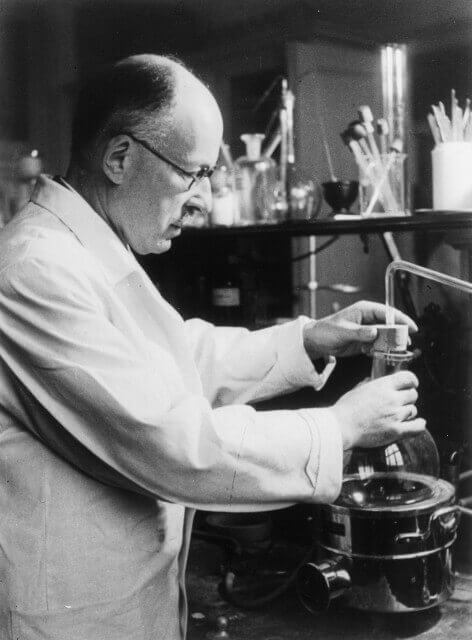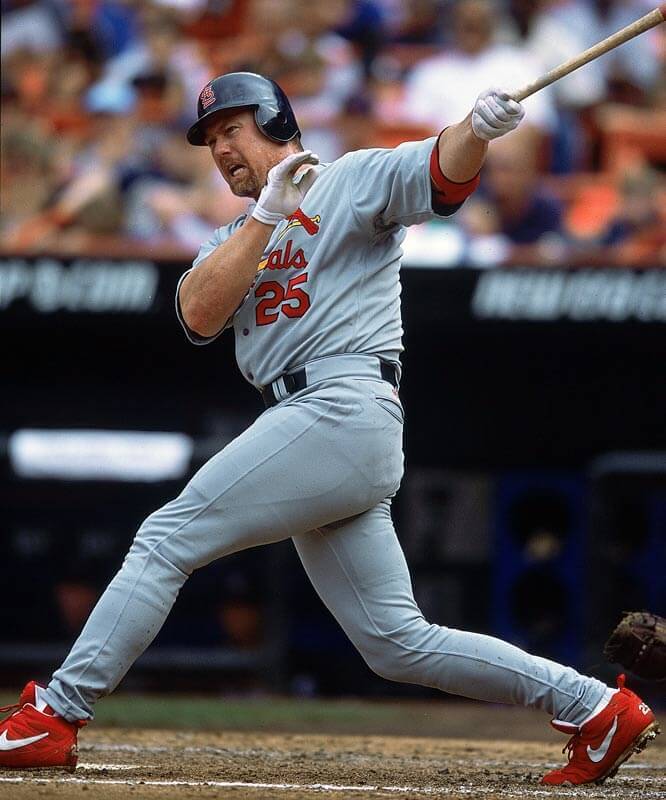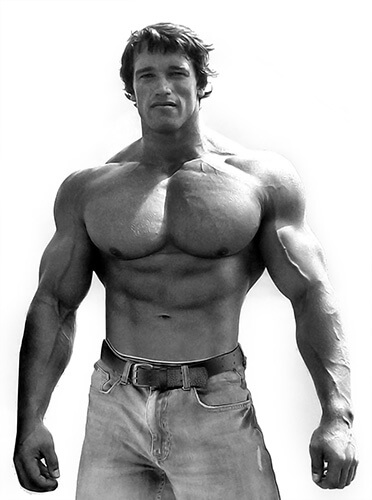THE BEST POSTS
LATEST POSTS
WIKISTERO : THE WIKIPEDIA OF ANABOLIC STEROIDS
Wikistero.com is a universal, multilingual, Internet–based encyclopedia that aims to provide objective and verifiable content about anabolic steroids, growth hormones and peptides. The objective of an encyclopedia such as Wikistero is to provide a coherent body of synthetic knowledge, presented in a neutral manner. The regular contribution of our passionate editors who post new articles every week, allows us to be the reference source of information on anabolic products.
FREE COACHING ADVICE
Do you have a question about the products? Not sure about your cycle, dosages or side effects?
WikiStero.com offers you professional advice to maximize your results safely. Our COACH is a former bodybuilding competitor, with years of experience in product advice, nutrition and training. This service is 100% free and confidential, your personal data will never be disclosed.

Mass gain
You want to gain weight and muscle mass, you are amateur or confirmed, make the right choice.

Dry mass gain
You want to gain lean muscle using steroids, so here’s what you need to know.

Dry and weight loss
If you want to lose weight quickly and safely, here are the things you need to know.

Power take off
Your goal is to gain a lot of strength with anabolic steroids, get to know the right products.
History of anabolic steroids
To understand anabolic steroids, it is important to trace their history and development from their origins to the present day.
The origins of anabolics
Originally, the hypothesis was that the testicles are necessary both for male development and for the maintenance of male sexual abilities. Soon after, this hypothesis was further developed by a scientist named Berthold and his experiments on roosters in 1849. He removed their testicles, and the roosters lost many of the characteristics common to males of this species (such as their sexual functions). So by 1849, we knew that the testes were essential to what we consider to be the primary sexual properties of humans. Berthold also found that if the testes were removed and then transplanted to the abdomen, the sexual functions of the roosters were not impacted. When the birds were dissected, it was also observed that no nerve connections had been created, and that the hairiness of the roosters had greatly increased. This showed that the testicles were acting on the blood and Berthold concluded that this blood then had a systemic effect on the entire body. The history of anabolic steroids really began with this simple series of experiments.
 Increase in testosterone levels
Increase in testosterone levels
Later, in 1929, a procedure to recover and produce a potent concentrate from bull testicles was attempted, and it was in 1935 that a purer form of this extract was created. A year later, a scientist named Ruzicka synthesized testosterone from cholesterol, followed by two other scientists, Butenandt and Hanisch. Testosterone is of course the first anabolic steroid ever created and remains the foundation for all other derivatives that are used in medicine today. Testosterone was then used in 1936 in another experiment that demonstrated that the nitrogen excretion of a neutered dog could be increased by giving the dog extra testosterone and even increase its weight. A rumor that has never been proven is that the Nazis gave their soldiers anabolic steroids. Later on, other experiments were conducted and proved that testosterone was a very powerful anabolic in humans. Later, between the years 1948 and 1954, the pharmaceutical companies Searle and Ciba started to synthesize more than a thousand derivatives and analogues of testosterone.
The history of steroids in athletics begins
In 1954, Dr. John Ziegler participated in the World Weightlifting Championships in Vienna, Austria, as the official physician for the Soviet team. The Soviets dominated the competition that year, easily breaking several world records and winning gold medals in all categories. Rumor has it that Ziegler confessed that testosterone injections were performed on his athletes. Once the Americans returned from the world championships, they immediately began to use this injection method to defeat the Soviets. The American team doctor also got involved with the Ciba laboratory to try to synthesize an even better and more powerful substance than pure testosterone. Thus, in 1956, Methandrostenolone was created, taking the name Dianabol. In the years that followed, the small oral tablets of pink dianabol took a prominent place in the training program of many weightlifters. By 1960, there was a clear performance gap between Ziegler’s weightlifters and the rest of the country, and much less with the Soviets. It was also in the 1960s that another anabolic steroid was developed and used to treat developmental delay in children with Turner syndrome. At this time, more and more American doctors began to experiment with steroids. Numerous studies were conducted on athletes using them to try to increase their performance. In 1967, the International Olympic Council banned the use of anabolic steroids in the name of the precautionary principle (doping), and by the mid-1970s, so did most major sports organizations.
Steroids at the Olympic Games
Just before the ban on steroids at the Olympic Games, the German Democratic Republic (GDR) began a program to synthesize new anabolic steroids for their athletes in several sports categories. The result of this research remains to this day the most extensive collection of information on steroid use in athletes. Despite the small size of their country, they managed to dominate the various sports, competing with the United States and the Soviet Union. In 1972, the IOC launched a large-scale drug testing program. In 1982, the International Olympic Council developed a way to detect excessive testosterone levels in athletes: the Epitestosterone Test. Testosterone and epitestosterone levels are then evaluated and compared. If the testosterone level is 6 times higher than the epitestosterone level, it can be concluded that a certain form of testosterone has been used by the athlete. This a priori unnatural level highlights that the subject is doped. But the IOC was already late, as usual: the GDR had already put into practice on their athletes a new form of testosterone that was rapidly dispersed in the body. The athletes passed the IOC test three days after their last injection. They then developed a protocol to allow their athletes to continue using steroids. Even stronger, the German company Jenapharm, which had already been supplying steroids to the athletes, even developed a product (epitestosterone) to be administered to the athletes, allowing them to bring the testosterone ratio back to normal while still using steroids. Their doping methods were so advanced that they went undetected for many years until 1989, when the information was leaked to the Western press: a systematic program of anabolic steroid administration and government-sponsored cover-up. It was this scandal that helped create the bad reputation that anabolic steroids still have today. Ironically, it was also in the 1990s that anabolic steroids began to be used by doctors to improve the longevity of AIDS and cancer patients.
Steroids in the United States
An identical scenario was unfolding in the United States. Prior to 1988, steroids were prescribed only by prescription as drugs, following the FDA (Food and Drug Administration) classification. However, they were not controlled. In 1988, the passage of the Anti-Drug Act placed steroids in a completely different prescription category, with very serious legal penalties for illegal sale or possession. Possession and distribution of steroids was considered a crime. Then the U.S. Congress added steroids to “Schedule III” of the law, placing these anabolic products on the same level as amphetamines, methamphetamines, opium and morphine, with identical penalties for buying or selling. This bill was passed without the support of the American Medical Association, the FDA, the DEA, or the National Institute on Drug Abuse. Steroids were again pushed into the news with the introduction of prohormones, developed and marketed by Patrick Arnold. This is when the steroid story enters baseball in the USA.
Steroids and American baseball
 Until then, Major League Baseball did not have a steroid testing program. Until Mark Maguire, an American athlete who wanted to break Roger Maris’ famous home-run record, was caught by a reporter with a bottle of androstendione in his locker (androstendione is not a steroid but a prohormone). Steroids were once again in the news and media, remaining in the news even after the affair when an athlete tested positive or admitted to using them. In the 2000s, steroids were again in the news when prohormones were introduced en masse. It was at this point that the presence of steroids in baseball began to become more prominent. Shortly after Roger Maris’ famous record was broken, another baseball player, Jason Giambi, and others were identified as users. Congress convened a hearing and did not determine that steroids were a danger, but rather that it was up to professional sports organizations to monitor and regulate their use. The law was updated, providing an official definition of the term steroid: in the United States, an “anabolic steroid” means any hormonal drug or substance, chemically and pharmacologically related to testosterone (other than estrogen, progestin, corticosteroids, and dehydroepiandrosterone).
Until then, Major League Baseball did not have a steroid testing program. Until Mark Maguire, an American athlete who wanted to break Roger Maris’ famous home-run record, was caught by a reporter with a bottle of androstendione in his locker (androstendione is not a steroid but a prohormone). Steroids were once again in the news and media, remaining in the news even after the affair when an athlete tested positive or admitted to using them. In the 2000s, steroids were again in the news when prohormones were introduced en masse. It was at this point that the presence of steroids in baseball began to become more prominent. Shortly after Roger Maris’ famous record was broken, another baseball player, Jason Giambi, and others were identified as users. Congress convened a hearing and did not determine that steroids were a danger, but rather that it was up to professional sports organizations to monitor and regulate their use. The law was updated, providing an official definition of the term steroid: in the United States, an “anabolic steroid” means any hormonal drug or substance, chemically and pharmacologically related to testosterone (other than estrogen, progestin, corticosteroids, and dehydroepiandrosterone).
Steroids today
Today, steroid use is on the rise. A recent Internet study concluded that the use of anabolic steroids among weightlifters and bodybuilders continues, including in athletics where use is reportedly increasing. In addition, the legal use of anabolic steroids continues for many medical problems, ranging from treating andropause or menopause, to speeding up the healing rate of burn victims. Steroids also continue to help and improve the quality of life of AIDS patients, breast cancer patients and effectively fight osteoporosis.

